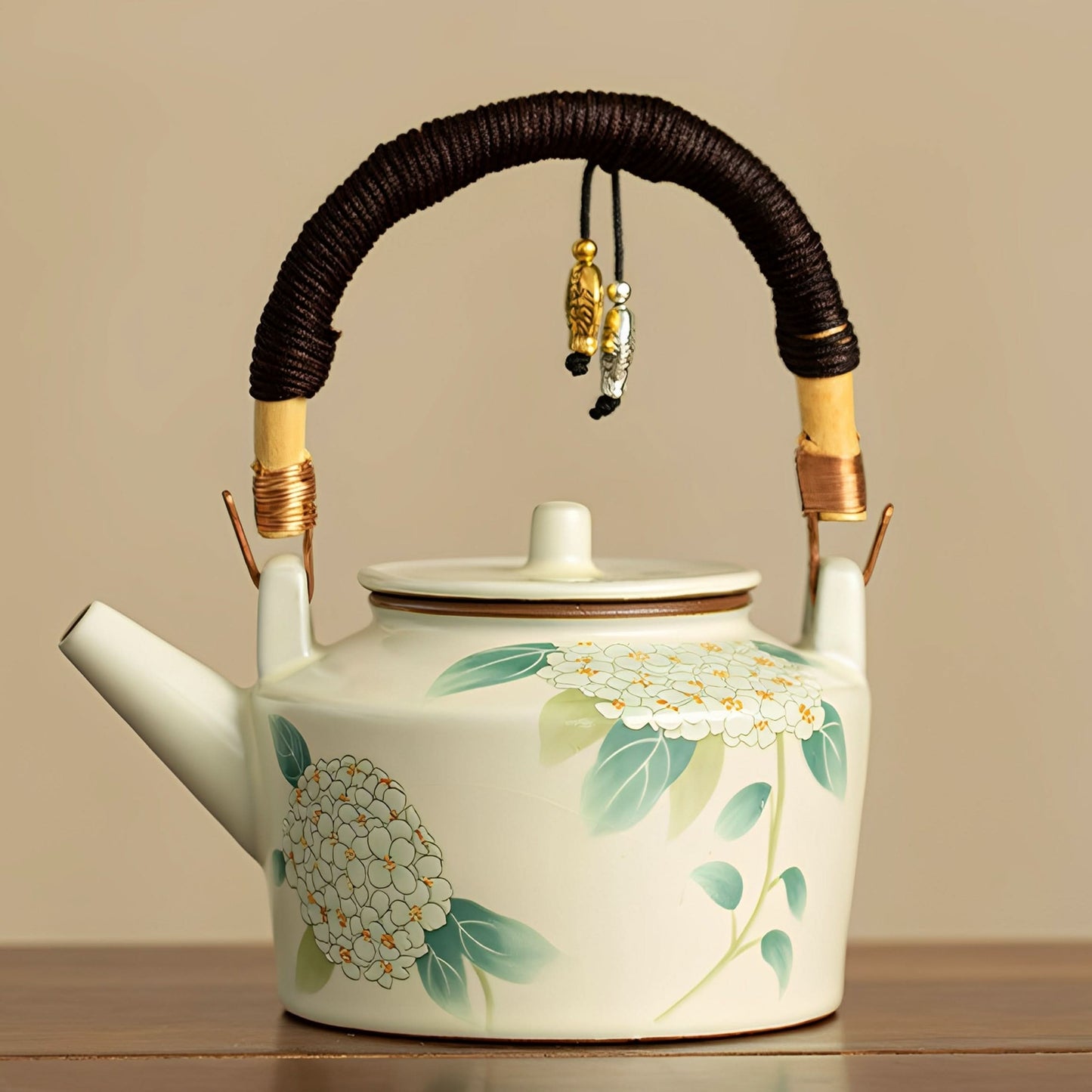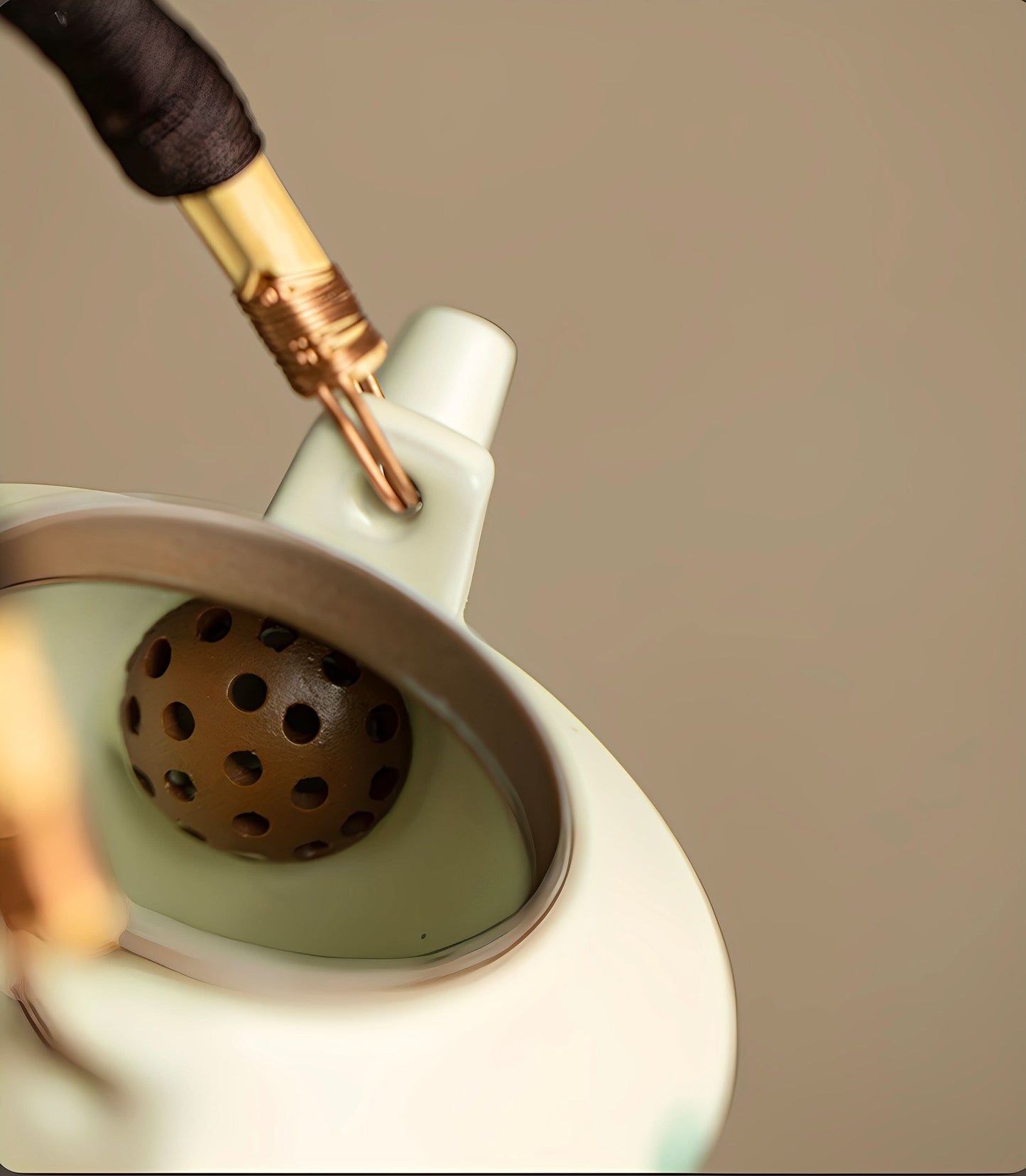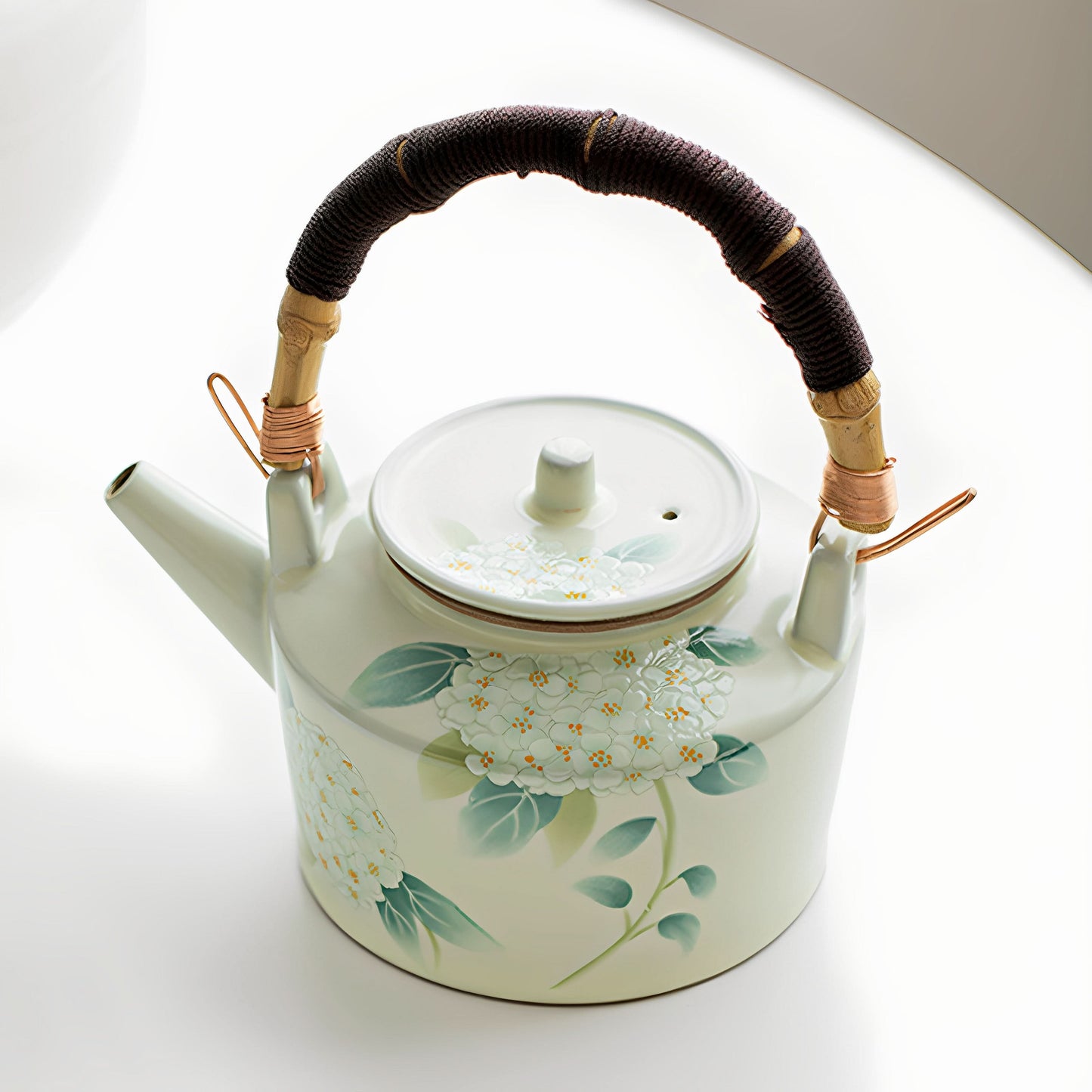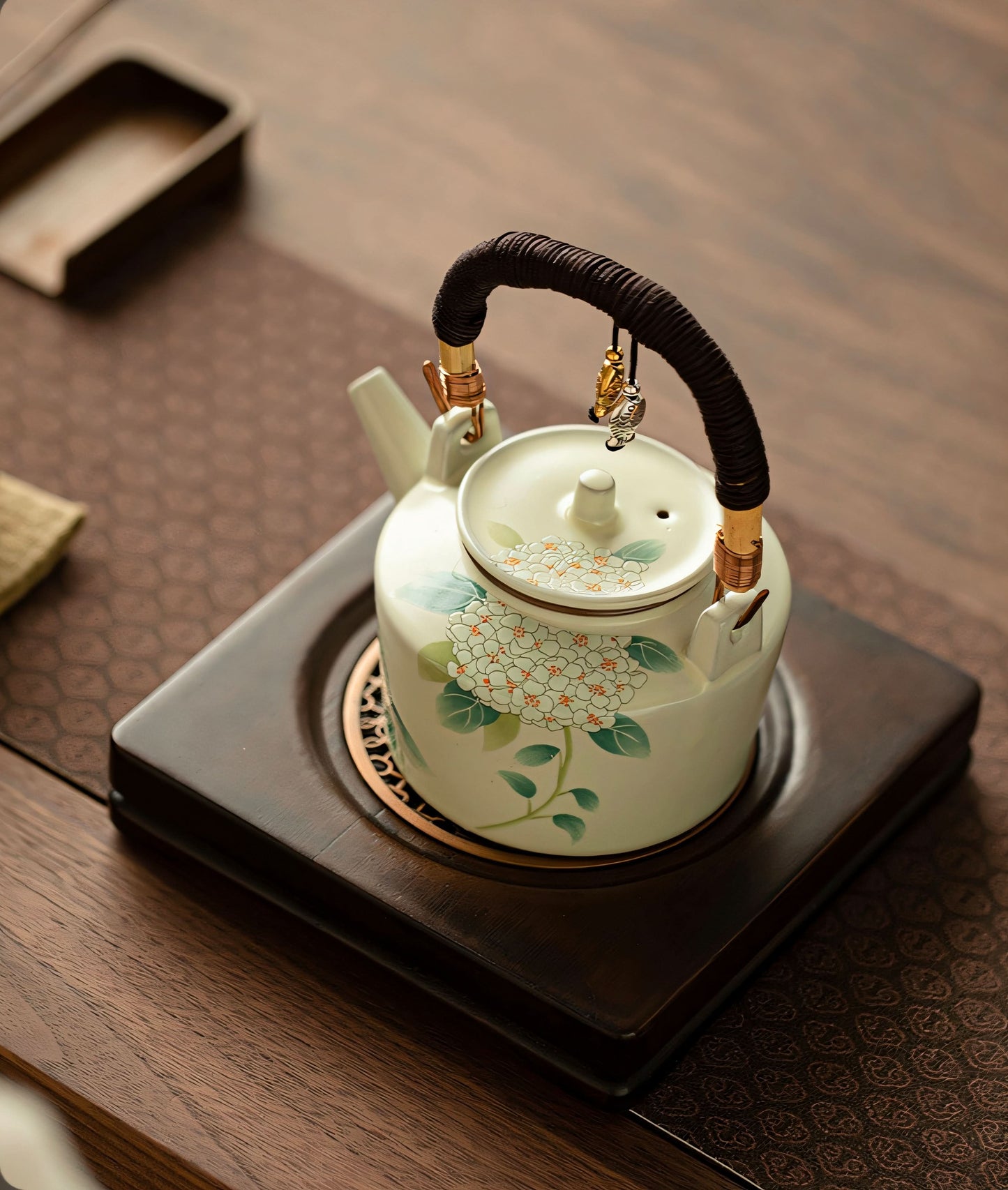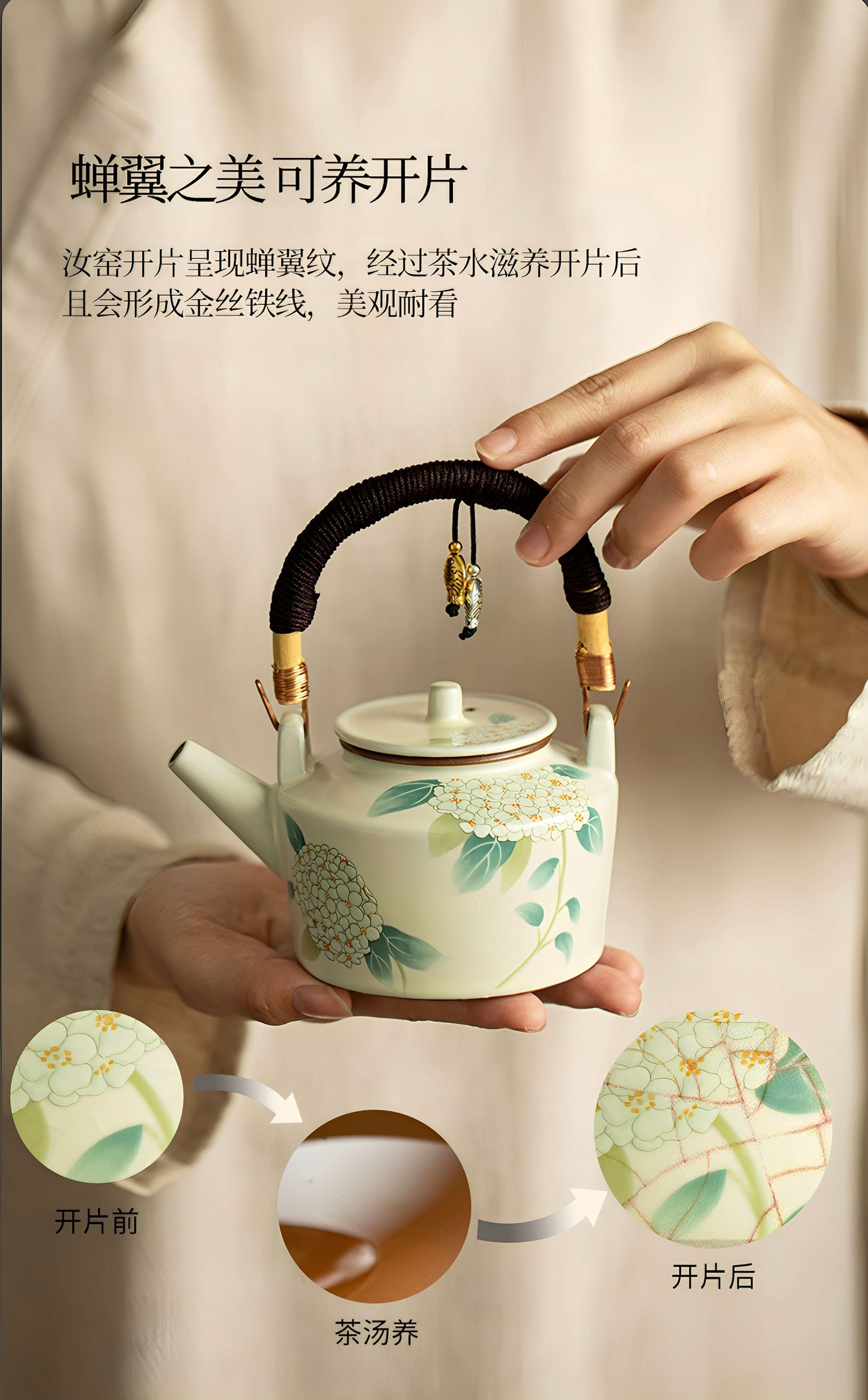Leeculture
Jasmine
Jasmine
无法加载取货服务可用情况
Chinese Ceramic Teapots: Where History Brews into Art
For over two millennia, Chinese ceramic teapots have served as more than vessels – they are three-dimensional chronicles of philosophy, craftsmanship, and the art of living.
A Journey Through Clay and Time
-
Tang Dynasty Origins (618–907 CE): The earliest Yixing zisha (purple clay) teapots emerged as scholarly companions, their porous clay "seasoning" with each brew like a calligrapher’s inkstone absorbing wisdom.
-
Song Dynasty Refinement (960–1279): Ru kiln’s "sky-blue glaze" pots became imperial meditation tools, their crackle patterns mimicking ice on frozen lakes – a visual koan for tea drinkers.
-
Ming Dynasty Revolution (1368–1644): Jingdezhen artisans perfected cobalt-blue underglaze, painting peony motifs that bled like ink on paper when steeped, merging painting and pottery.
-
Qing Dynasty Global Fusion (1644–1912): Export "China tea" pots hybridized phoenix motifs with European silver mounts, sparking 18th-century porcelain diplomacy.
Cultural Codex in Miniature
-
Daoist Alchemy: Yixing zisha’s iron-rich clay chemically bonds with tea oils, embodying the philosophy of "man and nature as one" (天人合一).
-
Confucian Hierarchy: Imperial dragon-phoenix motif pots enforced social order – their spout angles corresponding to user’s rank in Qing court tea ceremonies.
-
Zen Emptiness: Jianyang "hare’s fur" glaze pots, black as midnight, taught monks to "see the moon in water" – their rust-colored tea mimicking blood moon reflections.
The Silent Value Proposition
-
Biodegradable Luxury: A 16th-century zisha pot buried for 400 years emerges intact – testament to eternal craftsmanship in our age of disposable culture.
-
Thermodynamic Art: Thin-walled porcelain cools tea 0.3°C/minute – the exact rate Tang poet Lu Yu prescribed for "poetry-friendly sipping."
-
Living Patina: Master potters leave "breathing pores" that absorb the owner’s hand oils over decades, transforming each pot into a biometric heirloom.
Why Collectors Obsess
"This 1730s 'ghost-face' Yixing pot isn’t just clay – it’s a time machine. The mineral deposits inside still carry traces of Baihua tea sipped by exiled scholars during the Qianlong literary purges."
Modern Resonance
-
Slow Design Icon: Silicon Valley engineers commission "unplugged" zisha pots with built-in clay hourglasses – boil water, flip timer, and the tea brews exactly as Song dynasty manuals dictate.
-
Climate-Responsive Glazes: Contemporary artists develop self-crazing glazes that mimic drought patterns, turning each pot into a ceramic climate report.
-
Heritage Startups: Young potters 3D-scan Ming Dynasty shards to recreate "lost" clay formulas, now crowdfunded as "edible archaeology" experiences.
From imperial tributes to UNESCO-protected intangible heritage, these ceramic teapots remain China’s most eloquent ambassadors – not merely holding tea, but steeping civilizations.
Share
